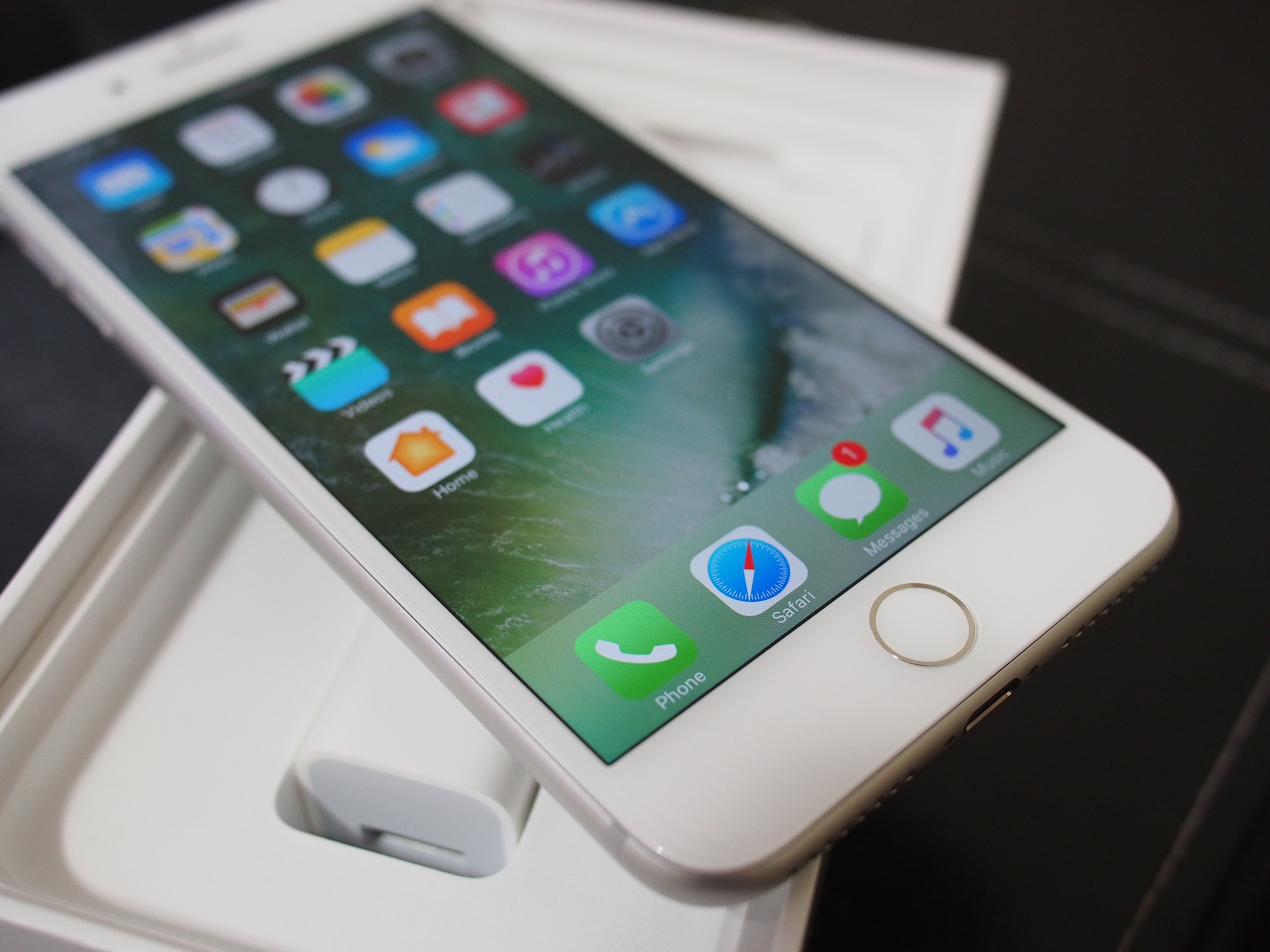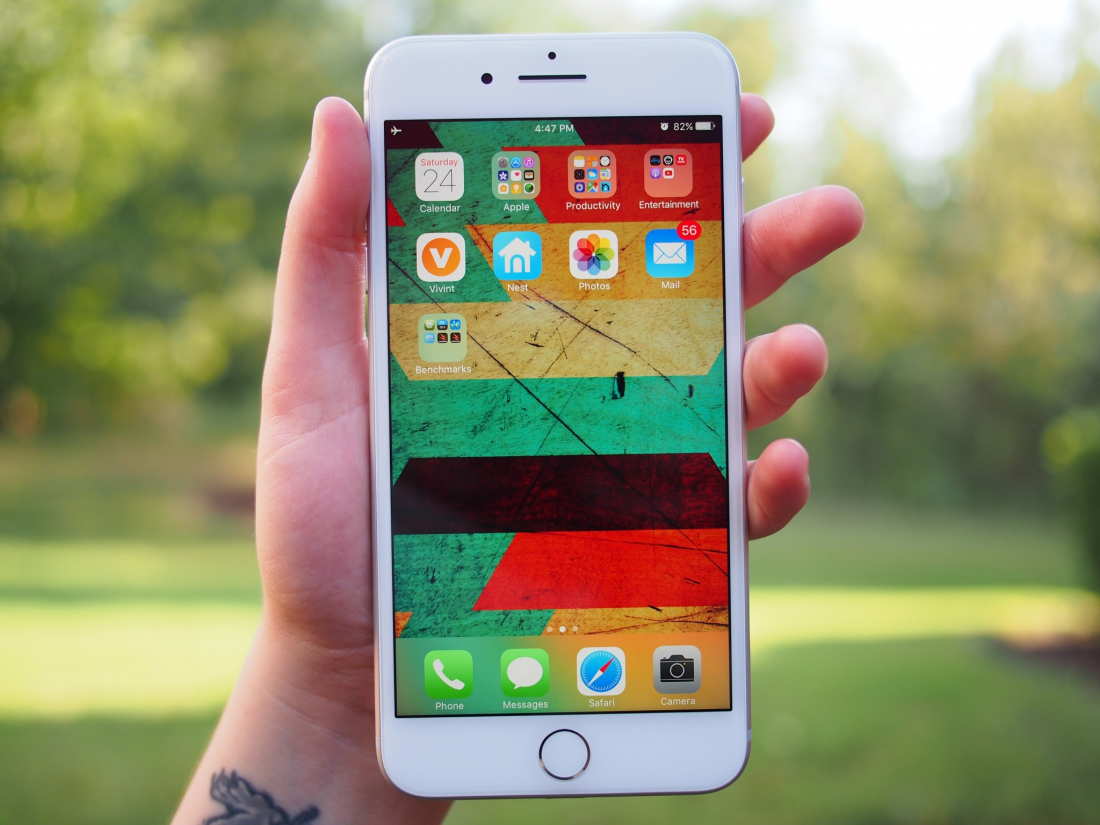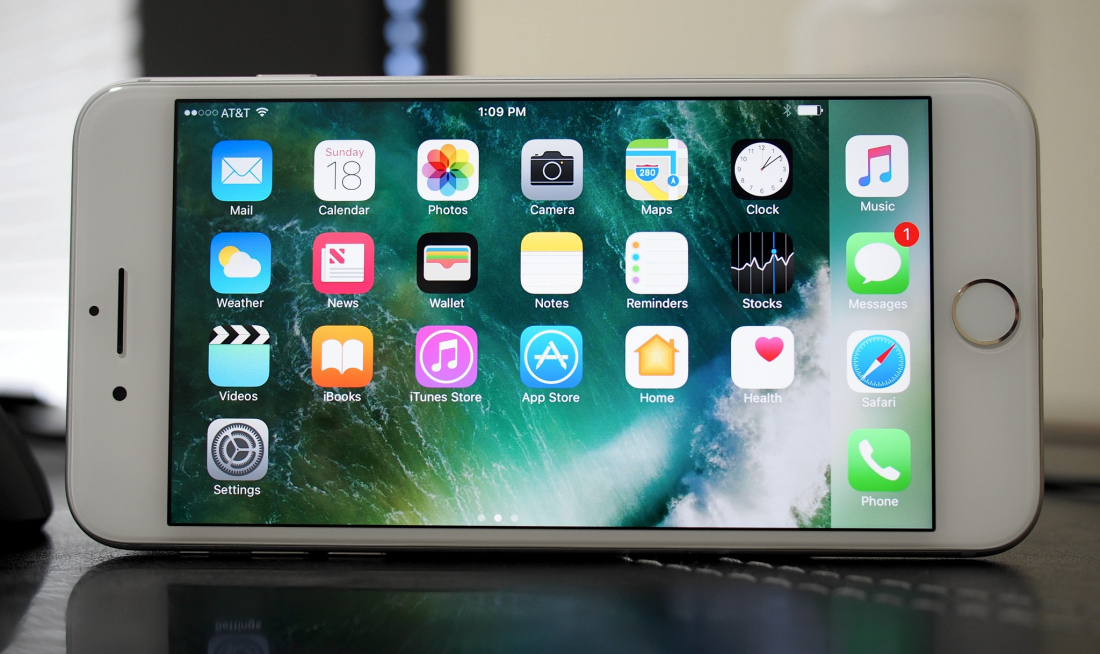iOS 10, Usage Impressions, A Sign of Things to Come?
The changes in iOS 10 are evident from the get-go. A new feature called Raise to Wake does just that - it wakes up the iPhone when you pick it up. It's a nifty feature for sure, especially for those that often look at their phones to check notifications or the time.
On the lock screen, you can now swipe left to access the camera instead of having to swipe up over the camera icon. You can still access the Control Center by swiping up as was possible in iOS 9 and swipe down for notifications. Swiping to the right now brings you to a list of widgets you may be using such as sports scores or the weather.
Whereas 3D Touch was the standout feature of iOS 9 a year ago, one needs to look no further than Apple's own Messages app to find iOS 10's star attraction. It's a wise move given the overwhelming popularity of third-party messaging apps like Snapchat and WhatsApp but don't expect the changes to appeal to everyone.
It all starts with emojis which, when sent by themselves, are now three times as large. What's more, if you have predictive typing enabled, you'll see that when you type a word with a corresponding emoji (like "koala" or "football"), said emoji will show up as an option to use in the QuickType bar.
Taking it a step further, you can switch to the emoji keyboard after typing out a message and iOS will highlight words in orange that you can tap on to replace with emojis.
If you're messaging a fellow iOS user, you'll also have access to two new visual effects over iMessage.
Bubble effects come in four forms. With Slam, the recipient will receive your message bubble as if it is slammed into the chat window. Similarly, the Loud option animates a message as if it is being yelled while Gentle messages arrive as smaller text that gradually gets bigger. Last but not least is Invisible Ink which masks a message until it is "scratched off" by the recipient.
The iPhone 7 Plus is more than capable of standing its ground among the sea of flagship smartphones flooding the market.
Screen effects, meanwhile, arrive with an animation that covers the entire chat window. Options here include Balloons, Confetti, Lasers, Fireworks and Shooting Star. To access either Bubble or Screen effects, simply press firmly (3D Touch) on the Send button after typing your message.
Another new Messages feature is Digital Touch, a carryover from watchOS that offers half a dozen different options - Sketch, Tap, Fireball, Kiss, Heartbeat and Heartbreak - to send messages. To access them, tap the Digital Touch icon when composing a message (it's the one that looks like a heart with two fingers over it).
If animations aren't your cup of tea and you'd prefer to keep messaging simple and to the point, you can disable predictive text and remove the emoji keyboard from the list of activated keyboards used in the settings menu although this won't fully opt you out of all of the aforementioned Messages features.
This really only scratches the surface of what's possible in the Messages app in iOS 10 but for the sake of brevity, we'll stop here and look at some other new aspects of Apple's latest mobile OS.
One welcomed change in iOS 10 is the ability to effectively remove default Apple apps that you may not use such as the News, Stocks or Watch apps. Up to this point, the best you could do was group unused apps into a single folder and pretend they don't exist.
With iOS 10, you can now remove Apple apps that you'll never use... sort of. To do so, simply long-press on an app to activate the ability to delete apps as you've always done. Now, you'll notice that many of the default apps have an "X" to delete them. The catch, however, is that you aren't really deleting them - they're just being hidden out of view. To get an app back, just go to the App Store and re-enable it.
Another handy feature in iOS 10 is voicemail transcription. Rather than having to listen to each voicemail (yeah, some people still prefer to talk on the phone rather than text), you can tap on a visual voicemail to read a transcription of said message. In my experience, this feature needs some work as one of the messages it transcribed - an automated message to confirm an appointment with my doctor - contained several errors and blank spaces. I was able to gather the gist of the message but it was far from an accurate transcript.
Unfortunately, not all changes in iOS 10 will be welcomed.
If you've ready my previous iPhone reviews, you may remember that I was incredibly happy when Apple with iOS 9 finally baked in a "delete all" option in its Mail app. For someone that receives a lot of junk e-mail each day, this was a great feature as it allowed me to select and delete dozens or even hundreds of spam messages in one fell swoop.
For some explicable reason, Apple removed this functionality in iOS 10. Now, when I tap Edit then Mark All, the only options to choose from are Flag and Mark as Read. The Trash option is greyed out. Why Apple would backtrack on such a useful feature is a bit mind boggling.
iOS 10 feels like a solid, well-rounded update. In my experience, it was only marginally faster than an iPhone 6s Plus with iOS 9 but aside from speed, it introduces a wealth of new features. Sure, Apple is playing catch-up with Android in some aspects but you really have to dig deep to find reasons not to like iOS 10 (and many of the features you may not like can be disabled).
All-Around Package
The iPhone 7 Plus is more than capable of standing its ground among the sea of flagship smartphones flooding the market. With a ridiculously fast processor, up to 256GB of local storage, a dual camera system, newfound water resistance and two new color options, there's plenty to hold consumers over for another cycle.
Official IP67 water and dust resistance is long overdue as other flagships have had this feature for years. I say official as last year's models were found to be semi-water resistant. Not having to triple bag my phone if I'm at an outdoor concert and rain clouds move in will be nice, nor will I freak out if I accidentally drop my phone in the toilet – speaking from experience unfortunately.
Do note, however, that water resistant and waterproof are two very different things. In practice, you should still try your best to avoid contact with liquids (don't go swimming with it, for example) as damage from liquids is not covered under Apple's standard warranty. You'll need to purchase Apple's extended warranty service, AppleCare+, for accidental liquid damage.
Heat was never a concern with the iPhone 7 Plus. While playing games like CSR Racing 2, the handset only ever became lukewarm to the touch. Things did get a bit warmer while charging and watching videos at the same time, for example, but never did it reach a point where it was uncomfortable to hold or prompt a temperature warning.
As it stands today, the twin camera approach is a bit of a mixed bag. The primary 26mm wide-angle camera with f/1.8 aperture is an improvement over last year's shooter but that's not necessarily the case with the 56mm telephoto camera due to its f/2.8 aperture lens. Is the difference between the two apertures that big of a deal, you ask? Yeah, it is.
Aperture is one of the three pillars of photography alongside shutter speed and ISO. In the simplest of terms, a lower f-stop number means more light is getting through to the sensor which is ideal when shooting pictures in dimly lit environments. Aperture is also responsible for manipulating depth of field as it helps to create those blurred, out-out-focus backgrounds typically associated with a DSLR or mirrorless camera.
What the secondary telephoto lens loses in terms of aperture, it makes up for in reach thanks to its effective 2x optical zoom... that is, when it's actually utilized. It'll become even more of an asset once portrait mode graduates from beta status to the public build of iOS 10.
Apple during its iPhone 7 event praised the handset's digital zoom which stretches all the way to 10x. Don't be fooled, however, as digital zoom is a terrible option that should rarely - if ever - be used. You'd be better served using the primary camera and cropping it yourself.
As an amateur photographer, I would love to see Apple offer some advanced controls in its camera app. Using a third-party app like Manual or Slow Shutter affords the ability to manually adjust things like ISO and shutter speed which, if you're photographing stationary objects and can prop the iPhone against something to eliminate movement, results in sharper images with far less noise, especially in low light situations.
While I applaud Apple's decision to add a second speaker for true stereo sound, it is poorly implemented and ultimately comes up short. As I covered earlier, the quality of the earpiece speaker isn't nearly as good as the primary one on the bottom of the phone. In use at higher volume, it sounds bad and causes the entire phone to vibrate / buzz. It reminds me a lot of the original iPhone which had a terrible loudspeaker.
Something else worth a mention is a slight quality control issue with my sample. After removing the plastic wrap and opening the box for the first time, I noticed two small scuffs on the aluminum near the speaker and baffle cutouts on the bottom of the phone. Fortunately, the marks buffed out with a bit of attention from a microfiber cloth.
Unfortunately, we weren't able to coordinate a proper battery test using our standardized procedure in time for this review. Apple claims the battery in the iPhone 7 Plus is good for up to an additional one hour of battery life. Excluding the first several days when I was heavily using the phone for testing purposes, I found that on average I have anywhere from 30 to 60 percent battery life remaining come bedtime.
A Sign of Things to Come?
All things considered, I can't help but feel as though this generation is more of a prologue than anything else. Allow me to explain.
The solid state Home button feels like a stepping stone to removing it entirely and integrating Touch ID directly into the front display as has previously been rumored. Jumping from a physical button to no button at all could conceivably confuse some users - not techies, mind you, but perhaps less tech-savvy users.
The removal of the 3.5mm headphone jack - which Apple wasn't the first to do, by the way - also falls into this category. The move was bound to cause dissension among the ranks but again, doing it this cycle instead of next year when a full redesign is expected will give users time to acclimate. Whether it's the Lightning port, audio over USB Type-C, or some form of wireless (my guess is the latter), time is ticking now that a major player has shed the jack.
The same could even be said about Apple's use of an LED-backlit, multi-touch IPS display for yet another generation albeit for a different reason. Waiting one more year to bring OLED screens to the iPhone buys some time for the technology to further mature and prices to come down.
The iPhone 7 Plus is the best iPhone to date as it relates to design aesthetics, features, and performance, but that doesn't mean you should go out and grab one ASAP.
I believe Apple's agenda with the iPhone 7 line is to lay the foundation for the iPhone 8, a handset that has the potential to generate the same sort of excitement Apple enjoyed when the redesigned iPhone 6 series landed in 2014.
Jumping back to present-day, the iPhone 7 Plus is without a doubt the best iPhone to date as it relates to design aesthetics, features, and performance, but that doesn't mean you should go out and grab one ASAP. Again, it's a top-tier smartphone but unless your iPhone 6 or newer becomes lost, stolen or broken, Apple hasn't presented a compelling enough reason to warrant an upgrade.
Pros: Blazing fast A10 Fusion SoC, higher-capacity storage options, IP67 dust and liquid protection, improved camera system, Taptic Engine is very convincing at simulating a physical button press, slightly larger battery.
Cons: Poor quality secondary (stereo) speaker, third year with the same design, no headphone jack – which didn't bother me but is a point of contention for some.



